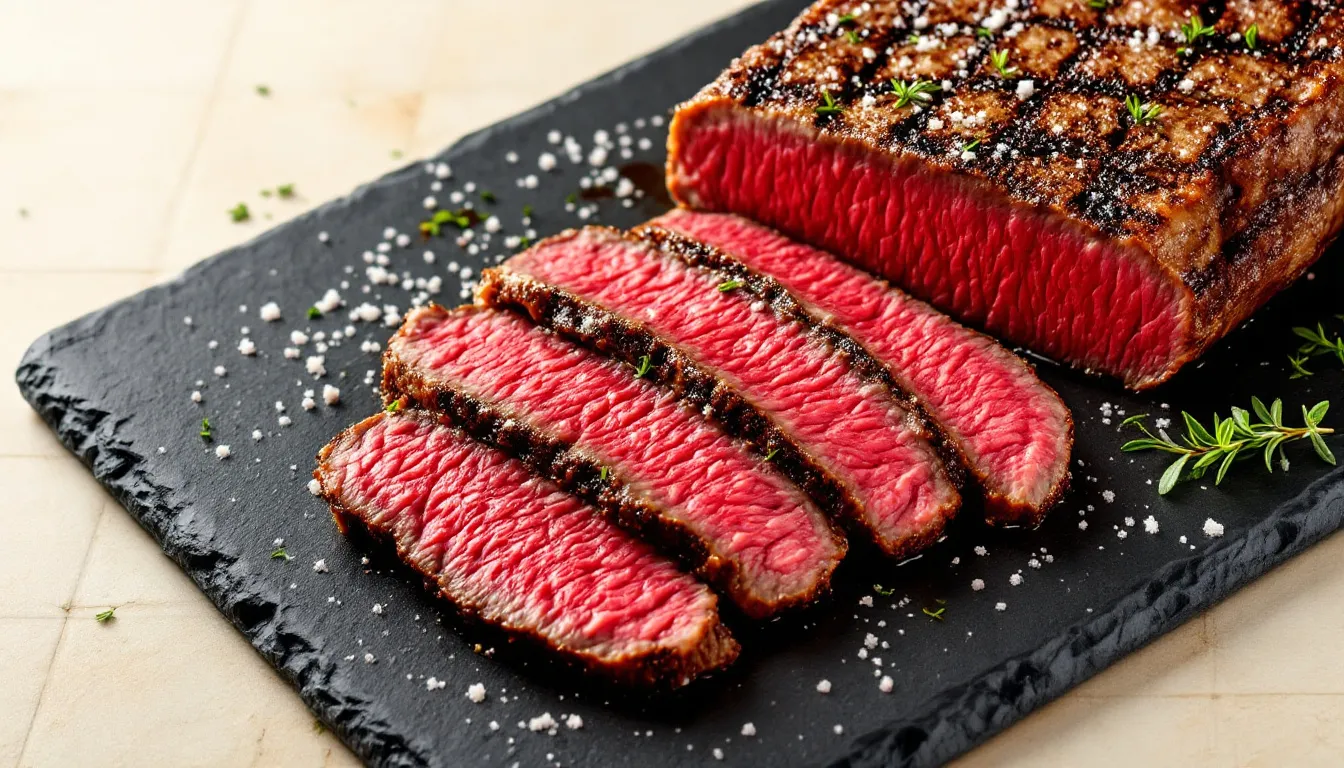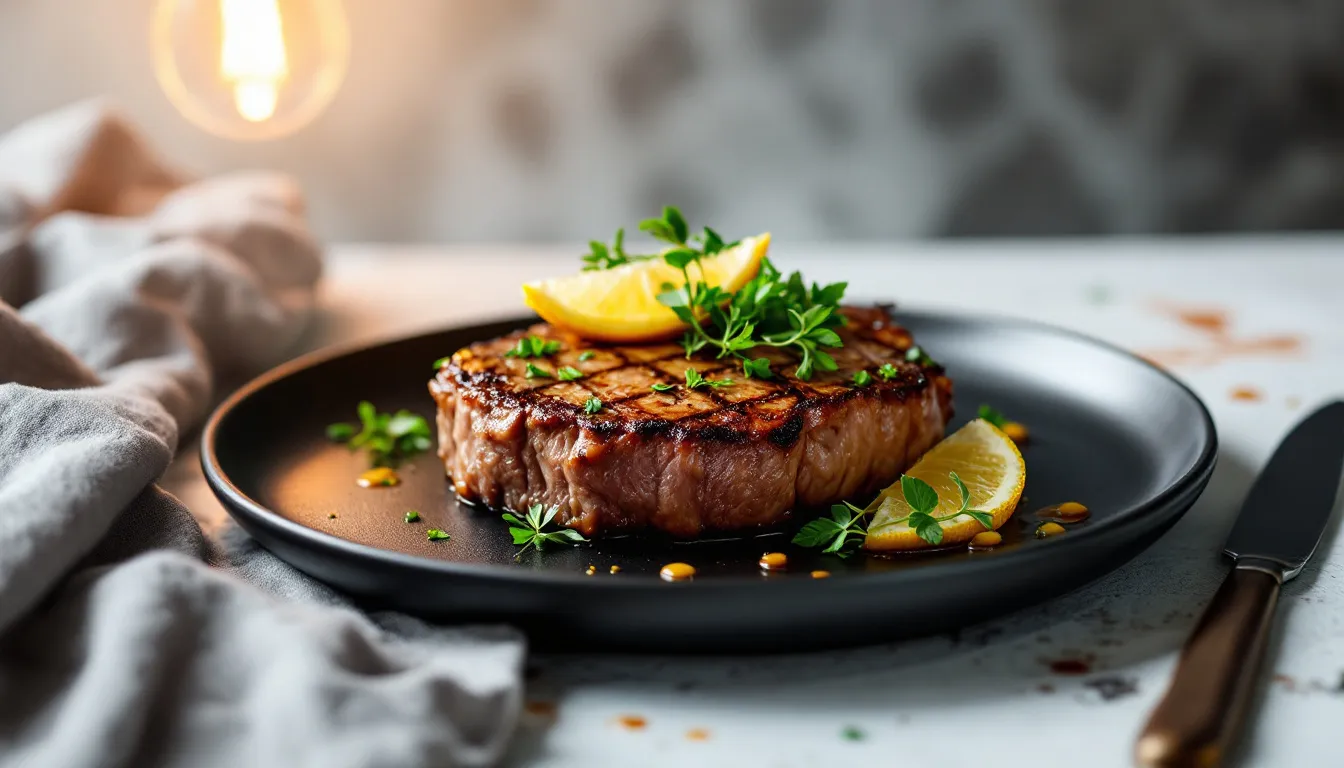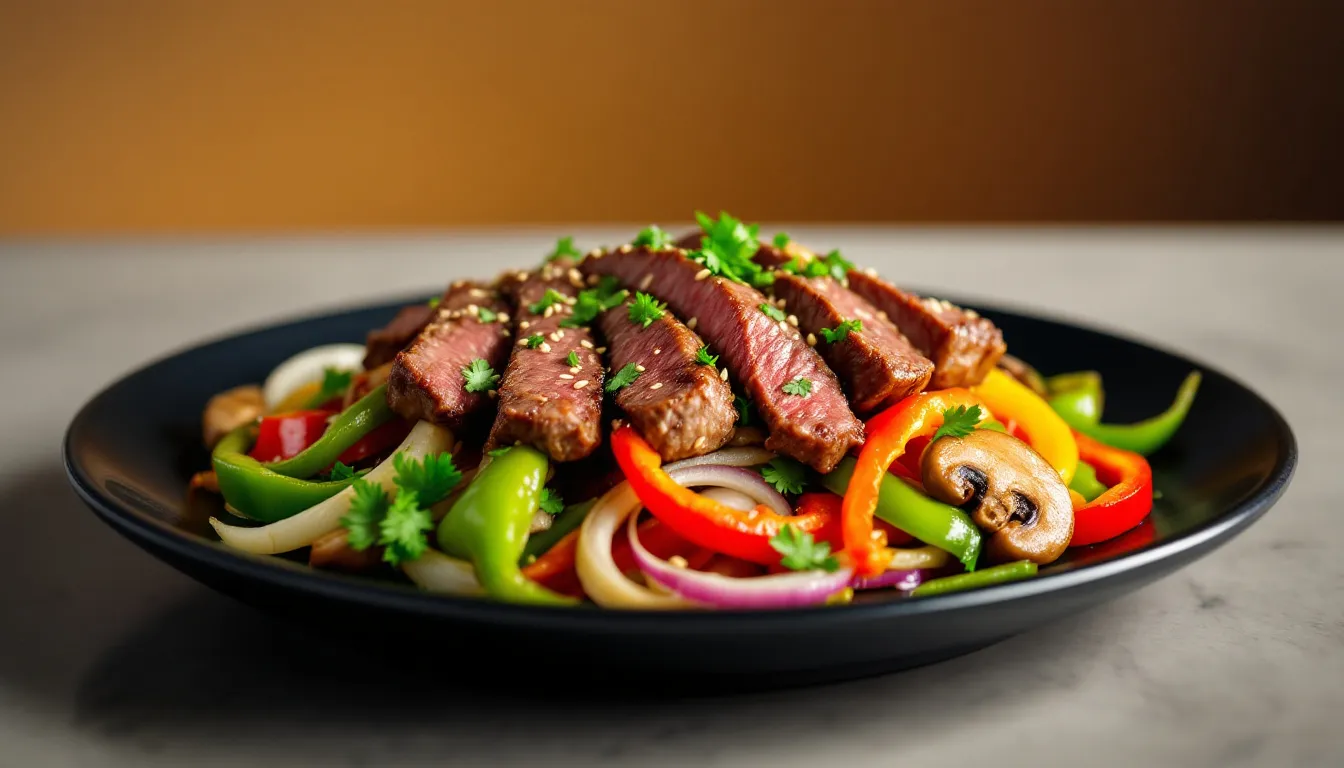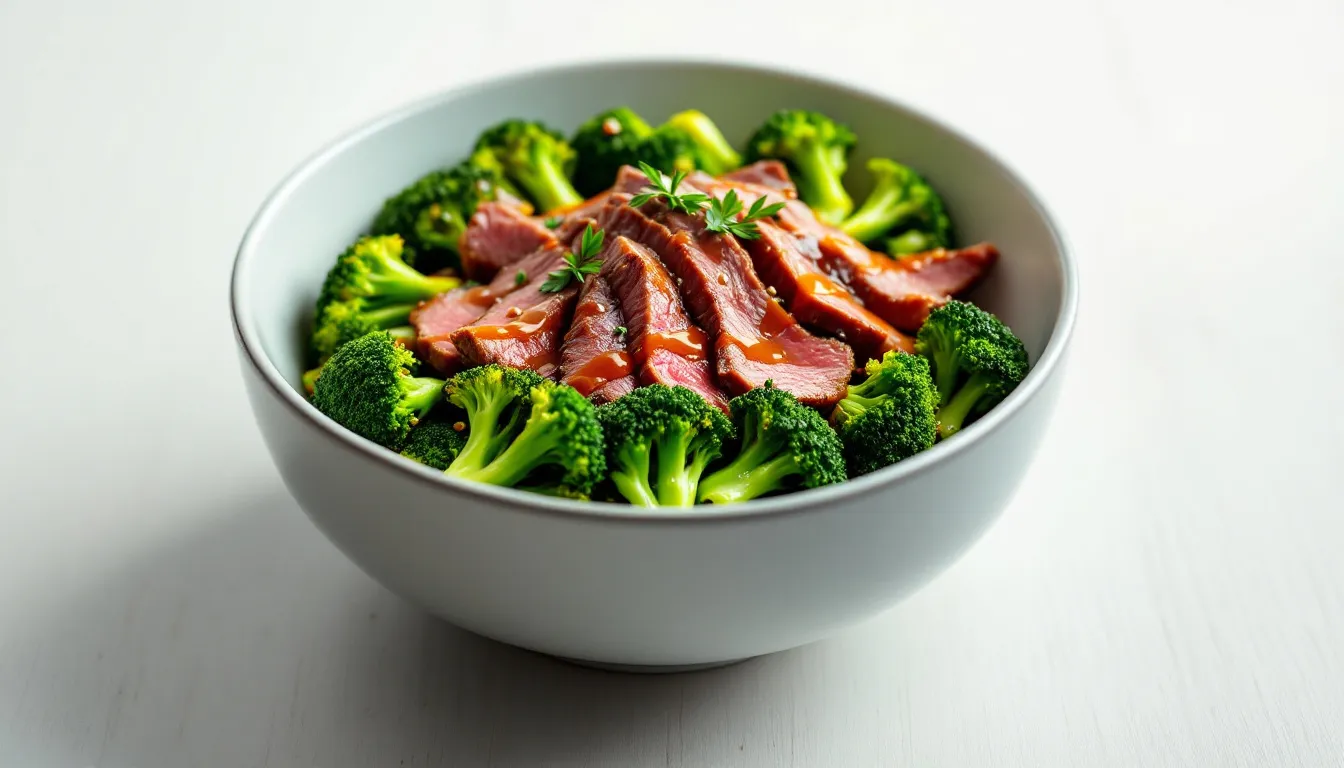Need keto beef steak recipes that are low in carbs and high in flavor? You’ve come to the right place. This article covers everything from choosing the best beef cuts to cooking techniques and marinades, helping you create perfect keto-friendly steaks every time.
Looking for the perfect steak? Check out our collection of single cuts!
Key Takeaways
-
Choose flavorful, low-carb cuts like ribeye, flatiron, flank, and skirt steak for delicious keto meals.
-
Master cooking techniques like proper searing and using a meat thermometer to achieve the perfect steak every time.
-
Enhance flavor with simple marinades and pair steak with low-carb sides like roasted veggies or cauliflower rice.
What is Keto Steak and is it Keto Friendly?
Keto steak refers to a type of steak that is prepared and seasoned in a way that aligns with the principles of a ketogenic diet. The ketogenic diet is a low-carb, high-fat eating plan designed to shift the body into a state of ketosis, where it burns fat for energy instead of carbohydrates.
Keto steak is inherently keto-friendly because it typically incorporates high-fat ingredients like butter, oil, and cheese, and is often paired with low-carb vegetables such as broccoli, cauliflower, and avocado. Additionally, many keto steak recipes utilize gluten-free soy sauce and other low-carb seasonings to enhance flavor without adding unnecessary carbs.
Popular keto steak dishes include garlic butter steak bites, pepper steak, and steak stir-fry. These recipes often feature cuts like sirloin steak, flank steak, or ribeye steak, cooked on medium-high heat to achieve a crispy crust on the outside while maintaining a tender interior. Whether you’re searing steak bites or stir-frying, these methods ensure a delicious, low-carb meal that fits perfectly into your keto lifestyle.
Best Cuts of Beef for Keto Steak Recipes

Choosing the right cuts of beef is key to creating mouthwatering keto steak recipes. Ribeye is popular among keto enthusiasts due to its rich marbling, which offers a juicy, tender texture ideal for a ketogenic diet.
Flatiron steak, with its robust flavor and budget-friendly price, is another excellent option. It’s a versatile cut that works beautifully in various keto recipes. Flank steak, known for its intense beefy flavor, is ideal for dishes where the steak is cut thin, such as in fajitas or stir fry.
Skirt steak is another flavorful cut that can elevate any keto meal. Consider how you plan to cook and flavor your steak when selecting your cut. Choosing ribeye, flatiron, flank, or skirt steak ensures a delicious, keto-friendly meal that satisfies your taste buds while keeping your carb count low.
How to Cook the Perfect Steak

Cooking the perfect keto steak begins with the right technique. Use a hot pan and avoid overcrowding it. This ensures each piece gets a proper sear, locking in juices and adding a delightful crust. For steak bites or larger cuts, this step is essential.
A meat thermometer helps you achieve the precise doneness you desire, whether it’s medium-rare or well-done. Typically, medium-rare steaks need about 4-5 minutes in the oven after searing, depending on thickness. Always rely on your thermometer for accuracy, as cooking times can vary.
Finally, let your steak rest for about 10 minutes after cooking to allow juices to redistribute, resulting in a more tender and flavorful bite. Following these tips will help you master the art of cooking the perfect keto steak every time.
Flavorful Keto Steak Marinades
Marinades add depth and complexity to your keto steak recipes. Garlic butter is a beloved option, infusing the steak with rich flavors while keeping it moist and tender. Fresh garlic, rather than pre-minced, significantly enhances the flavor’s intensity.
Chili garlic sauce adds a spicy kick, pairing wonderfully with the savory notes of the beef. Coconut aminos provide a keto-friendly alternative to soy sauce, enhancing the umami flavor of your steak.
Season your marinades with fresh herbs like thyme and rosemary, and add a pinch of chili flakes for extra zing. These ingredients create a delicious marinade that fits within the low-carb keto diet.
Keto Garlic Butter Steak Bites
Keto garlic butter steak bites are a quick, delightful dish ready in just 15 minutes. This recipe is popular among keto followers for its simplicity and rich flavor. Main ingredients include sirloin steak, fresh garlic, and salted butter. Season the steak with salt and pepper to enhance its natural flavors.
Heat a pan over high heat and sauté the steak bites until browned, about two minutes. High heat ensures a nice sear, locking in juices and creating a delicious crust. Serve the steak bites with low-carb vegetables, a fresh salad, or cauliflower mash for a versatile and satisfying meal.
Garlic and butter create a savory, rich taste that pairs perfectly with tender sirloin steak. This keto steak recipe is delicious and fits into paleo and Whole30 diets, catering to various dietary preferences.
Keto Pepper Steak Stir Fry

Keto pepper steak stir fry is a quick, healthy dish bursting with Asian flavors and ready in under 30 minutes. Slice the steak very thinly when partially frozen, with flank steak being the best choice. This ensures quick and even cooking. Stir-fry the steak in a large skillet over medium-high heat until perfectly seared.
Prepare the vegetables: green peppers, onions, mushrooms, broccoli, cauliflower, zucchini, and baby corn are excellent low-carb additions. Stir-fry the vegetables for 2-3 minutes until they reach your desired tenderness.
Combine the beef and vegetables with a stir fry sauce made from broth, soy sauce, and seasonings. Let everything simmer for a few minutes to meld the flavors while stir frying. Thicken the sauce with glucomannan or xanthan gum if needed.
With only 3.4g net carbs per serving, this keto pepper steak stir fry is a flavorful and nutritious low-carb meal option.
Keto Beef and Broccoli

Keto beef and broccoli is a quick and easy one-pan meal that takes about 20 minutes to prepare and serves six. Main ingredients include flank steak, monkfruit stir fry sauce, and various low-carb vegetables. Thinly slice the flank steak diagonally against the grain for tenderness, and cook for about 15 minutes.
This dish is ideal for a keto diet, with just 4.9 net carbs per serving and 232 calories, making it both low-carb and low-calorie. The combination of tender beef, crunchy broccoli, and savory stir fry sauce makes it a delicious and satisfying meal.
Serve keto beef and broccoli with cauliflower rice to keep the meal low-carb and add extra vegetables. This dish is perfect for busy weeknights when you need a quick, nutritious dinner for the whole family.
Low-Carb Keto Meal Planning
Low-carb keto meal planning is all about preparing meals that adhere to the ketogenic diet’s low-carb, high-fat guidelines. Effective meal planning can help you stay on track with your dietary goals, save time, and reduce stress during busy weeks.
Here are some tips for successful low-carb keto meal planning:
-
Plan Ahead: Outline your meals for the week to ensure you have all the necessary ingredients. This helps avoid last-minute grocery runs and keeps you focused on low-carb options.
-
Make a Grocery List: Stick to your list to avoid purchasing high-carb foods. Focus on fresh vegetables, quality meats, and keto-friendly pantry staples.
-
Cook in Bulk: Prepare large batches of meals and store them in the fridge or freezer. This is a time-saver and ensures you always have a keto-friendly meal ready to go.
-
Use Meal Planning Tools: Apps and websites dedicated to keto meal planning can be incredibly helpful. They offer recipes, shopping lists, and nutritional information to keep you on track.
-
Variety is Key: Incorporate a range of low-carb vegetables and protein sources to ensure a balanced intake of nutrients. This keeps your meals interesting and nutritionally complete.
Popular resources for keto meal planning include keto-specific cookbooks, meal planning apps, and websites that offer a plethora of recipes and meal ideas. By planning your meals, you can enjoy a variety of delicious, low-carb dishes that support your keto journey.
Nutrition Information for Keto Steak Recipes
Understanding the nutritional content of your meals is crucial for maintaining a successful ketogenic diet. Here’s a general overview of the nutrition information for some popular keto steak recipes:
-
Garlic Butter Steak Bites: Approximately 320 calories, 26g fat, 12g protein, and 5g carbs per serving. These steak bites are rich in flavor and perfect for a quick, satisfying meal.
-
Pepper Steak: Around 400 calories, 30g fat, 20g protein, and 10g carbs per serving. This dish combines tender steak with vibrant vegetables for a nutritious, low-carb option.
-
Steak Stir-Fry: About 500 calories, 35g fat, 25g protein, and 15g carbs per serving. A hearty meal that’s packed with flavor and nutrients, ideal for a filling dinner.
These estimates are approximate and can vary based on specific ingredients and portion sizes. For personalized nutrition advice, it’s always best to consult with a healthcare professional or registered dietitian.
To track the nutrition information of your keto steak recipes accurately, consider using popular nutrition tracking apps and websites like MyFitnessPal, Lose It!, and Nutritionix. These tools can help you monitor your intake and ensure you’re meeting your dietary goals while enjoying delicious keto meals.
Serving Suggestions for Keto Steak
Pairing your keto steak with the right sides can elevate your meal. Popular low-carb sides include roasted broccoli, zucchini chips, and cauliflower rice, which complement the steak’s rich flavors without adding unnecessary carbs.
For a more indulgent option, try creamed Brussels sprouts in garlic parmesan sauce or prosciutto-wrapped asparagus. These sides enhance the steak’s flavor and provide essential nutrients, making your meal both delicious and balanced.
These low-carb sides help you stay within your dietary goals while enjoying a satisfying, flavorful dining experience. Whether hosting a dinner party or enjoying a quiet meal at home, these suggestions enhance your keto steak recipes.
Storing and Reheating Steak
Proper storage and reheating are essential for maintaining the quality of leftover steak. Store cooked steak in an airtight container to keep it fresh for up to 3-4 days, ensuring you can enjoy your delicious keto steak recipes as leftovers.
Before reheating, let the steak come to room temperature for about 30 minutes to prevent overcooking and ensure even warming. For reheating, the oven is a great option. Heat the steak at 250°F until it reaches an internal temperature of 110°F to retain moisture and flavor.
If using the microwave, cover the steak with a damp paper towel to keep it juicy. After microwaving, searing the steak on the stovetop can restore its crispy exterior. These tips ensure your reheated steak remains as delicious as when first cooked.
Cooking Tools for Keto Steak Recipes

Investing in the right cooking tools is crucial for preparing perfect keto steak recipes. A cast iron skillet is essential for achieving a beautiful sear and retaining heat effectively, making it a staple for any keto cook.
A stainless steel skillet is a good alternative if a cast iron skillet isn’t available. For grilling, a stove-top grill pan or a George Foreman Grill are excellent indoor alternatives to outdoor grilling, offering the versatility needed for various keto steak recipes.
For pan-frying, sirloin or ribeye steaks are highly recommended for their rich flavor and tenderness, making them ideal for keto steak dishes. With the right tools and cuts, you’ll master the art of keto steak cooking.
Summary
Exploring the world of keto steak recipes opens up a realm of delicious possibilities. By choosing the right cuts of beef, mastering cooking techniques, and experimenting with flavorful marinades, you can create mouthwatering meals that fit perfectly into your keto diet. From quick and easy garlic butter steak bites to hearty keto beef and broccoli, these recipes offer something for every palate.
Pairing your steak with low-carb sides and knowing how to store and reheat leftovers ensures you make the most of your culinary creations. Investing in essential cooking tools like a cast iron skillet can further enhance your cooking experience, helping you achieve restaurant-quality results at home.
So, fire up your skillet, grab your favorite cut of beef, and dive into the delicious world of keto steak recipes. Your taste buds will thank you, and your keto journey will be all the more enjoyable.
Frequently Asked Questions
What are the best cuts of beef for keto steak recipes?
For keto steak recipes, ribeye is a top choice for its marbling, followed by flatiron for flavor, flank steak for versatility, and skirt steak for its beefy taste. Go for these cuts and you can't go wrong!
How can I ensure my steak is cooked perfectly?
To cook your steak perfectly, make sure to use a hot pan and avoid overcrowding while searing each side. Don't forget to use a meat thermometer for doneness and let it rest afterward for that tender bite!
What are some keto-friendly marinades?
You can't go wrong with garlic butter, chili garlic sauce, or coconut aminos for keto-friendly marinades. Toss in some fresh garlic and herbs like thyme and rosemary to really amp up the flavor!
What sides pair well with keto steak?
Low-carb sides like roasted broccoli, zucchini chips, and cauliflower rice are perfect with keto steak. They keep your meal tasty and on track!
How should I store and reheat leftover steak?
Store your leftover steak in an airtight container in the fridge for 3-4 days. To reheat, pop it in the oven at 250°F or use the microwave with a damp paper towel. You can also sear it on the stovetop if you want that crispy edge.

